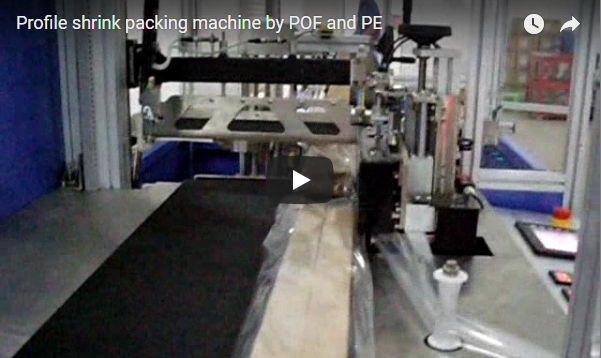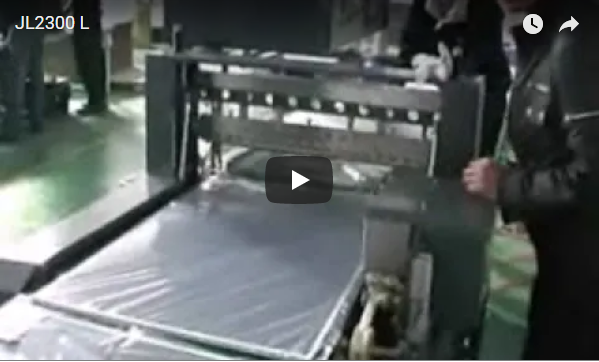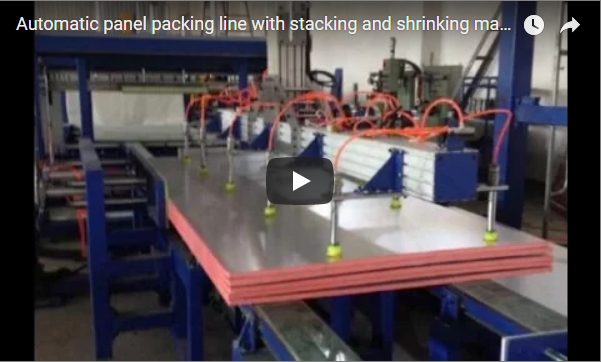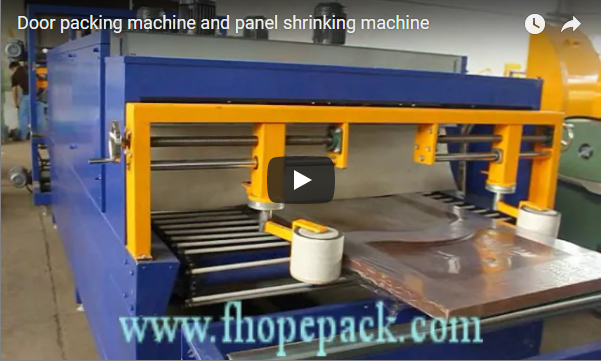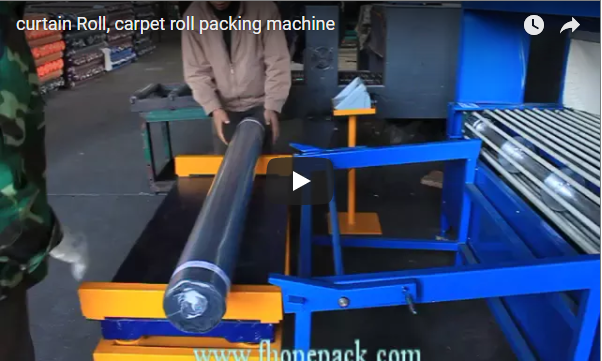Modern packaging operations demand speed, efficiency, and product protection. Full side seal shrink wrapping machines represent a significant advancement in automated packaging technology, offering versatile solutions for wrapping a diverse range of products. This article delves into the technical specifications, design features, operational benefits, and user considerations for these essential pieces of industrial equipment.
1. Understanding the Full Side Seal Shrink Wrapping Process
Unlike traditional L-bar sealers which create a complete seal in one motion but are limited by the bar size, full side seal machines operate continuously or intermittently for unlimited product length packaging:
- Infeed: Products are typically fed onto the machine's conveyor belt, often automatically spaced to ensure correct positioning for wrapping.
- Film Encasement: A flat sheet of shrink film, fed from a roll, is folded lengthwise. Products enter this folded film tube.
- Side Sealing: A continuously heated roller or knife system seals one open side of the film tube as the product travels along the conveyor. This continuous seal is a key feature, allowing for packaging of products of virtually any length.
- Cross Sealing: As the product, now encased in film on three sides, moves past the side sealing unit, a set of cross seal jaws descends (often using box motion for higher speeds) to seal the front of one package and the back of the preceding package, simultaneously cutting the film between them.
- Shrink Tunnel Transfer: The fully encased product then moves into an integrated shrink tunnel.
- Shrinking: Inside the tunnel, precisely controlled hot air circulates around the package, causing the shrink film to tighten uniformly around the product, creating a secure, protective, and often visually appealing final wrap.
2. Core Components and Design Features
The efficiency and reliability of a full side seal shrink wrapper stem from its integrated components and thoughtful design:
- Infeed Conveyor: Often features variable speed control and synchronization with the sealing system to manage product spacing and flow. Materials range from standard belts to specialized food-grade options.
- Film Delivery System: Includes a powered film unwind mechanism with tension control to ensure smooth, consistent film feeding without stretching or tearing. Advanced systems may feature automatic film splicing capabilities.
- Side Sealing Unit: Typically employs a heated wheel or a specialized knife system for continuous sealing. Durability and consistent temperature control are critical for seal integrity. Some designs offer intermittent side sealing for specific applications.
- Cross Seal Jaws: Engineered for precision and speed. Common technologies include hot knife (constant heat) or impulse wire sealing. Box motion designs allow the jaws to move with the product momentarily, enabling higher throughput without stopping product flow. Seal bar coatings (e.g., PTFE) prevent film buildup.
- Shrink Tunnel: Features adjustable temperature controls (often PID controllers for stability), variable airflow direction and speed, and conveyor types suited to the product (e.g., live rollers, silicone rollers, mesh belts). Efficient insulation minimizes energy consumption.
- Control System: Usually managed by a Programmable Logic Controller (PLC) with a Human-Machine Interface (HMI) touchscreen. This allows for parameter adjustments (speed, temperature, bag length), recipe storage for different products/films, and diagnostic feedback.
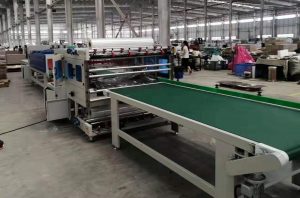
3. Technical Specifications Breakdown (Typical Ranges)
Specifications vary significantly based on machine model and configuration, but here are common ranges:
- Packaging Speed: 30 - 120+ products per minute (PPM), depending on product size, film type, and machine configuration (intermittent vs. continuous motion).
- Maximum Product Dimensions:
- Width: 150mm - 600mm+
- Height: 5mm - 350mm+
- Length: Virtually unlimited due to side seal design.
- Seal Bar Dimensions:
- Cross Seal Width: 200mm - 700mm+
- Film Type Compatibility: Primarily Polyolefin (POF) shrink films; some models adaptable for Polyethylene (PE).
- Film Thickness: Typically 12 - 30 microns.
- Power Requirements: 220V/380V, 3-Phase, 50/60Hz; Consumption varies greatly (10 kW - 30 kW+ depending on tunnel size and speed).
- Air Requirements: Often 6-8 bar (80-100 psi) for pneumatic functions.
- Machine Footprint: Highly variable, from compact units to extensive lines incorporating long tunnels.
4. Advantages Over Traditional Shrink Wrapping Methods
Full side sealers offer distinct advantages, particularly compared to manual methods or basic L-bar sealers:
- Unlimited Product Length: The continuous side seal removes length limitations inherent in L-bar designs.
- Higher Throughput: Continuous motion models significantly outperform intermittent L-bar sealers in PPM.
- Improved Aesthetics: Often produces cleaner seals without the potentially bulky side seal trim of some L-bar systems.
- Potential Film Savings: Precise bag length control can minimize film waste compared to less sophisticated systems.
- Automation Integration: Designed for seamless integration into automated production lines.
5. Key Considerations for Selection and Operation
Choosing and running a full side seal wrapper effectively involves several factors:
- Product Characteristics: Size range (W, H), weight, shape (regular vs. irregular), and stability influence machine configuration and handling needs.
- Speed Requirements: Match the machine's PPM capability to your production targets. Continuous motion models offer the highest speeds.
- Film Compatibility: Ensure the machine is optimized for your chosen film type (POF is common for clarity and strength). Film quality impacts seal integrity and shrinkage.
- Changeover Time: If handling multiple product sizes, inquire about the ease and speed of adjustments (e.g., tool-less adjustments, HMI recipe recall).
- Maintenance & Reliability: Consider ease of access for cleaning, lubrication, and parts replacement (e.g., sealing blades/wires, conveyor belts). Look for robust construction.
- Operator Skill: While automated, operators need training for setup, operation, troubleshooting, and safety procedures. Modern HMIs simplify interaction.
- Safety Features: Ensure compliance with safety standards (e.g., interlocked guarding, emergency stops).
6. Applications Across Industries
The versatility of full side seal shrink wrappers makes them suitable for numerous sectors:
- Food and Beverage: Wrapping trays, multipacks, boxes (bakery, confectionery, frozen foods).
- Pharmaceuticals and Cosmetics: Securely wrapping cartons, bottles, and bundled items.
- Printing and Paper: Bundling notebooks, stationery, books, magazines.
- Contract Packaging (Co-Packing): High flexibility required for diverse client needs.
- E-commerce Fulfillment: Efficiently wrapping varied products for shipment protection.
- Hardware and DIY: Packaging tools, kits, and components.

panel shrink packing machine Conclusion
Full side seal shrink wrapping machines are indispensable assets for manufacturers and packagers seeking high-speed, efficient, and protective packaging solutions. Their ability to handle products of unlimited length, combined with advanced control systems and robust component design, delivers significant operational advantages. By carefully considering product requirements, speed needs, and operational factors, businesses can leverage these machines to enhance productivity, reduce waste, and ensure products reach their destination securely and professionally presented.

